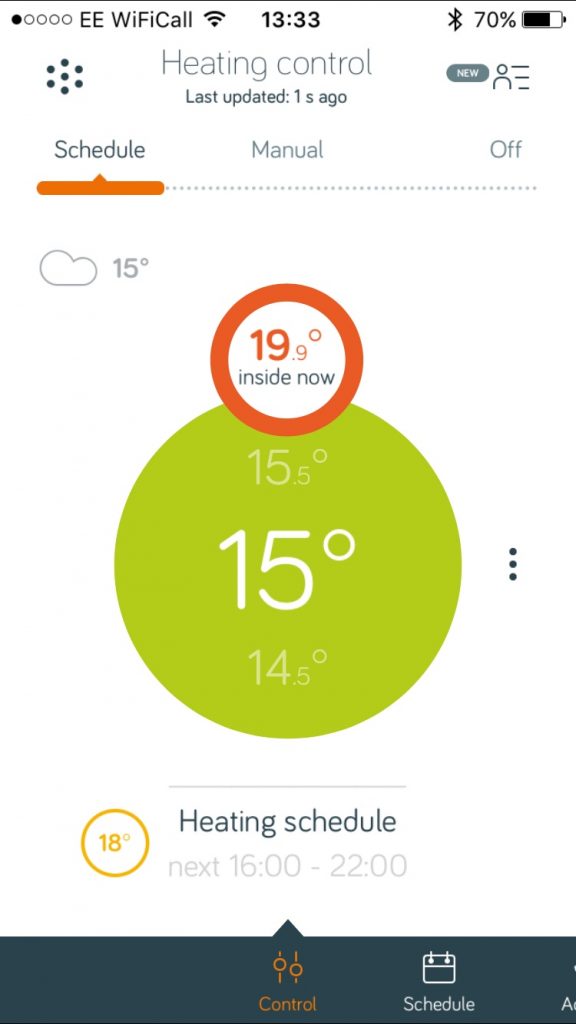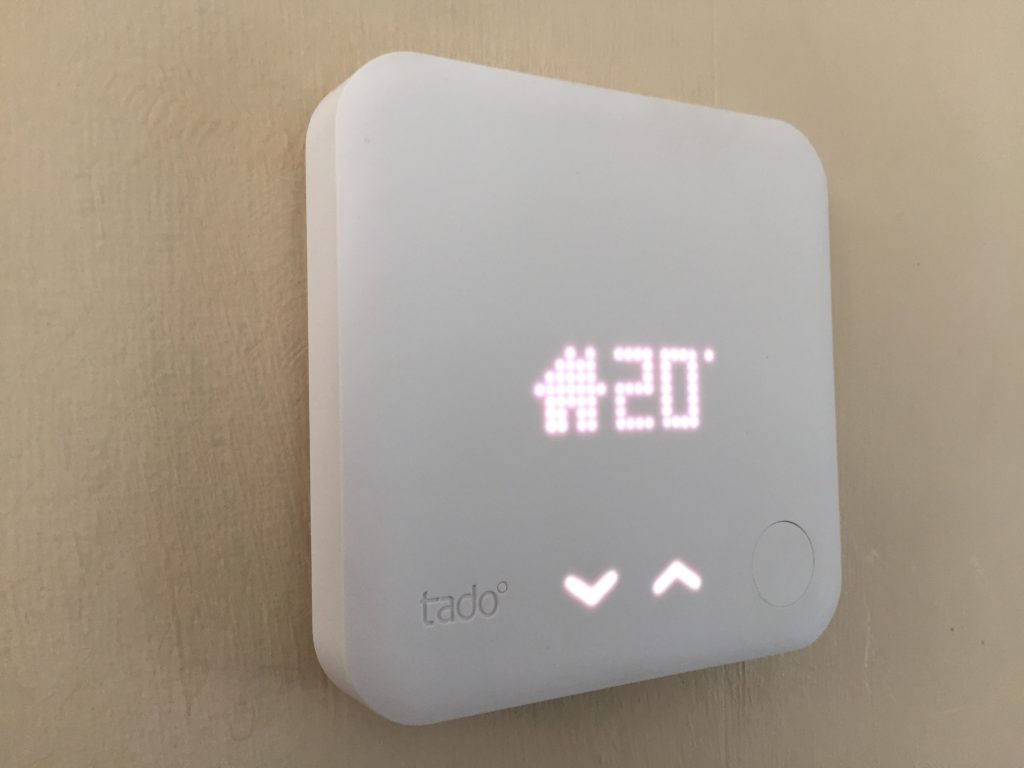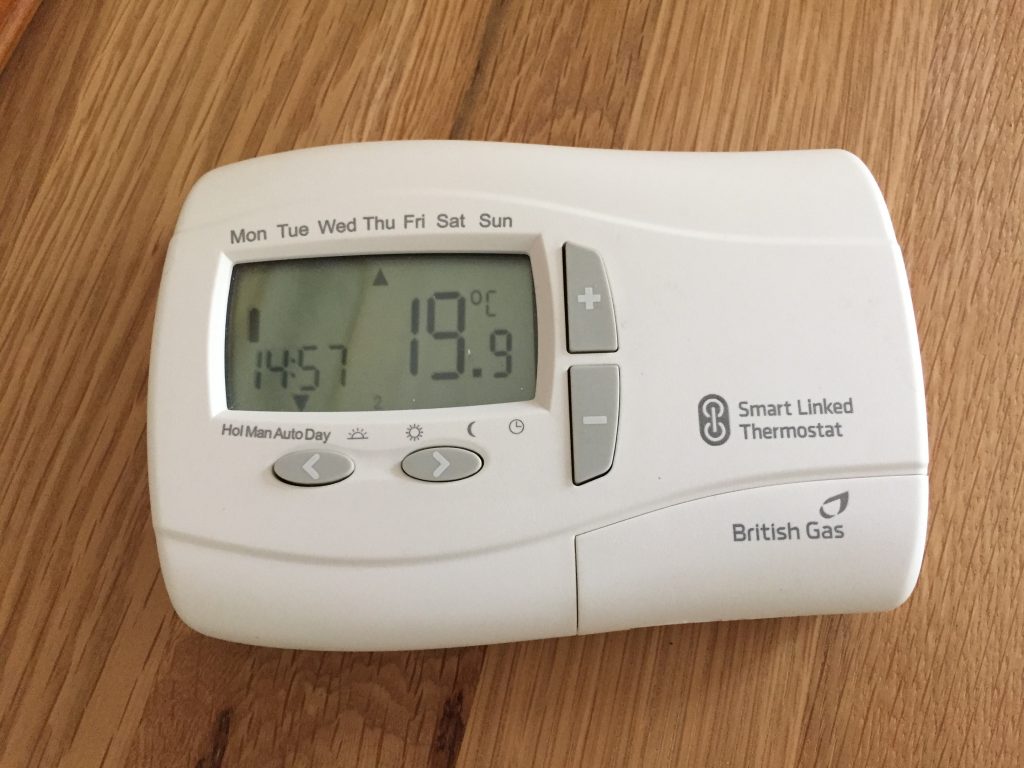I’ve been gradually adding smart technology to our home over the last few years. This has been driven mainly by a desire to improve the comfort and security of its occupants. However, I’ve also managed to reduce the gas and electricity bills in the process. This is my first post describing the smart home technologies I have implemented so far and focuses on Smart Heating Control.
Smart Heating Control
My first foray into the smart home was about 5 years ago when British Gas launched its Remote Control Central Heating, the forerunner to Hive Active Heating. It allows you to control your central heating using an iPhone app in conjunction with a single smart thermostat which can be placed anywhere in the house. The version I have allows you to programme the desired temperature for 4 separate periods during each day of the week (newer versions of the Hive thermostat allow up to 6 periods to be programmed per day). Nominally this is used to set different temperatures for early morning, during the middle of the day , the evening and throughout the night. Unlike conventional thermostats, it allows you to programme different temperatures for each part of the day. In practice though we set ours at a higher temperature for morning and evening and a lower temperature for day time and night time. We then boost the temperature, as required, safe in the knowledge that the system will revert to the programmed temperature when the next period starts.
Smartphone App

Using the iPhone app you can control your central heating not only when you’re at home but also when you are away from home. You can increase or decrease the current emperature, as well as edit the heating schedule. Hive has also started t add geo-location capabilities to the app. You can now set it up to notify if you leave home without turning down the heating and to remind you to turn it back up when you are on your way home.
Cost Justification
Manufacturers of Smart Heating Controls make claims that they can save you money on your energy bills. Hive specifically claims that you can “save up to £130 a year on your heating bill”. As we have a larger than average house I think we may have saved even more than that in the first 12 months and pretty much recovered the whole outlay of £249. From our experience the real savings you achieve with Smart Heating Control come from not having to remember to lower the thermostat temperature when you go to bed at night.
How it works
The first generation of British Gas Remote Control Central Heating uses a proprietary hub connected via Ethernet to your home broadband router. This hub communicates wirelessly with the Smart Thermostat and Hive’s cloud-based service which the iPhone app communicates with. The Smart Thermostat in turn controls the boiler wirelessly via a Receiver which is wired into your boiler controls.
My Wish List
New versions of Hive Active Heating support control of your hot water as well as your central heating. This would be useful as the legacy programmer than controls our hot water has no boost facility. It is either on or off. Therefore, if you want a bit more hot water you have to override the timer and turn it back on. It you forget to turn it back off it will continue on for the rest of the day or night until the next timed period starts. Clearly this is wasting energy.
When I was looking at a Smart Heating Control for my elderly mother earlier this year, I did a review of the market and in particular the market leaders – Hive, Nest, Honeywell, and Tado. I chose Tado for my mother as it appeared to be easier for a non-electrician to install and I could control it remotely using my iPhone.

At some point I will justify the cost of replacing our current Remote Control Central Heating with Tado. It has promised to upgrade current systems with a Homekit certified bridge in the near future, so it can be controlled by Siri on your iPhone! I would also be interested in its location-based controls which enable the temperature to be automatically turned down, or the system switched off completely, when all the occupants are away from the home.
In time I might add in some smart radiator thermostats to provide finer grain control of the temperature in each room.
Have you installed a Smart Heating Control? If so, how would you like to see the technologies evolve?

